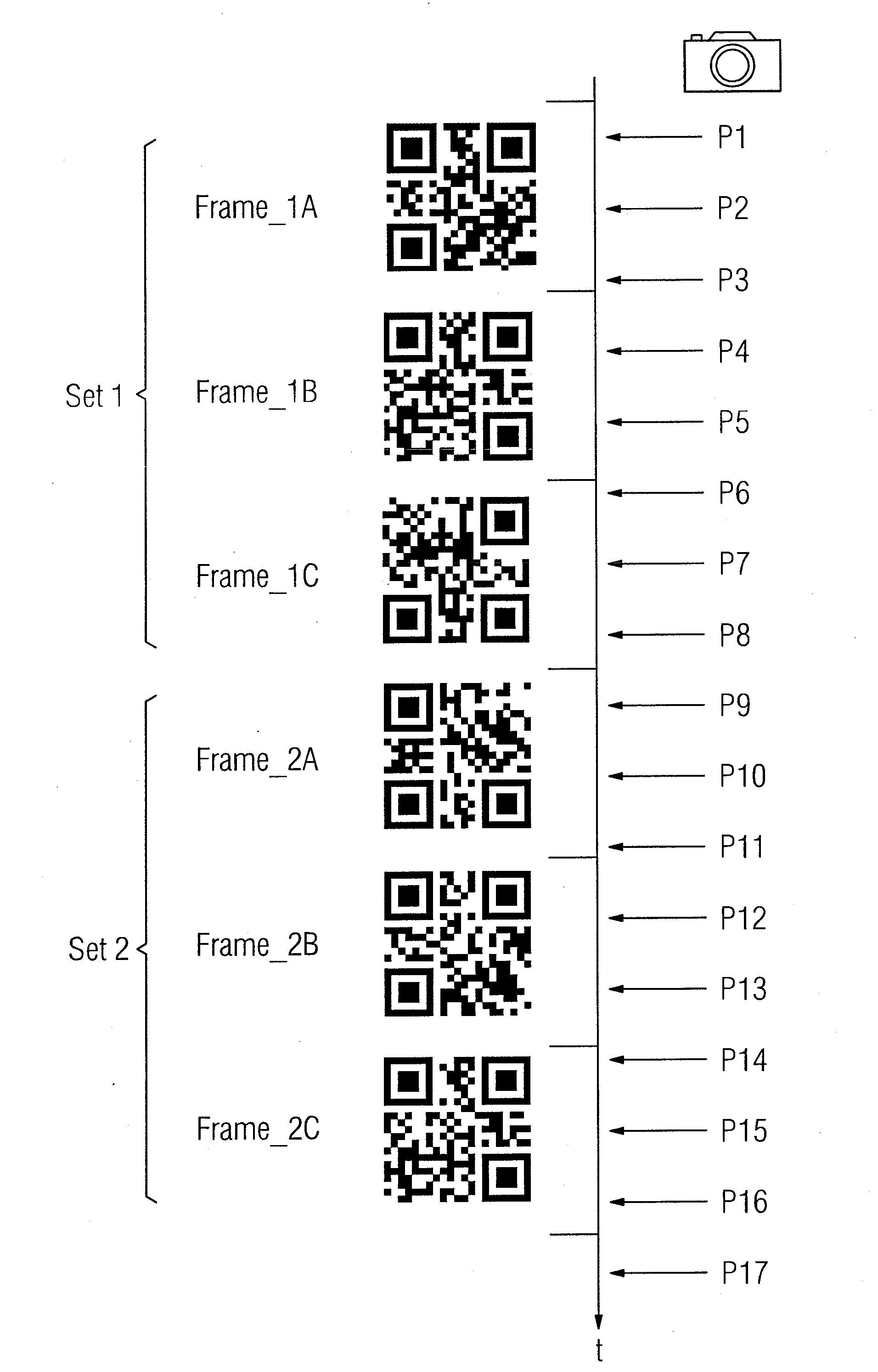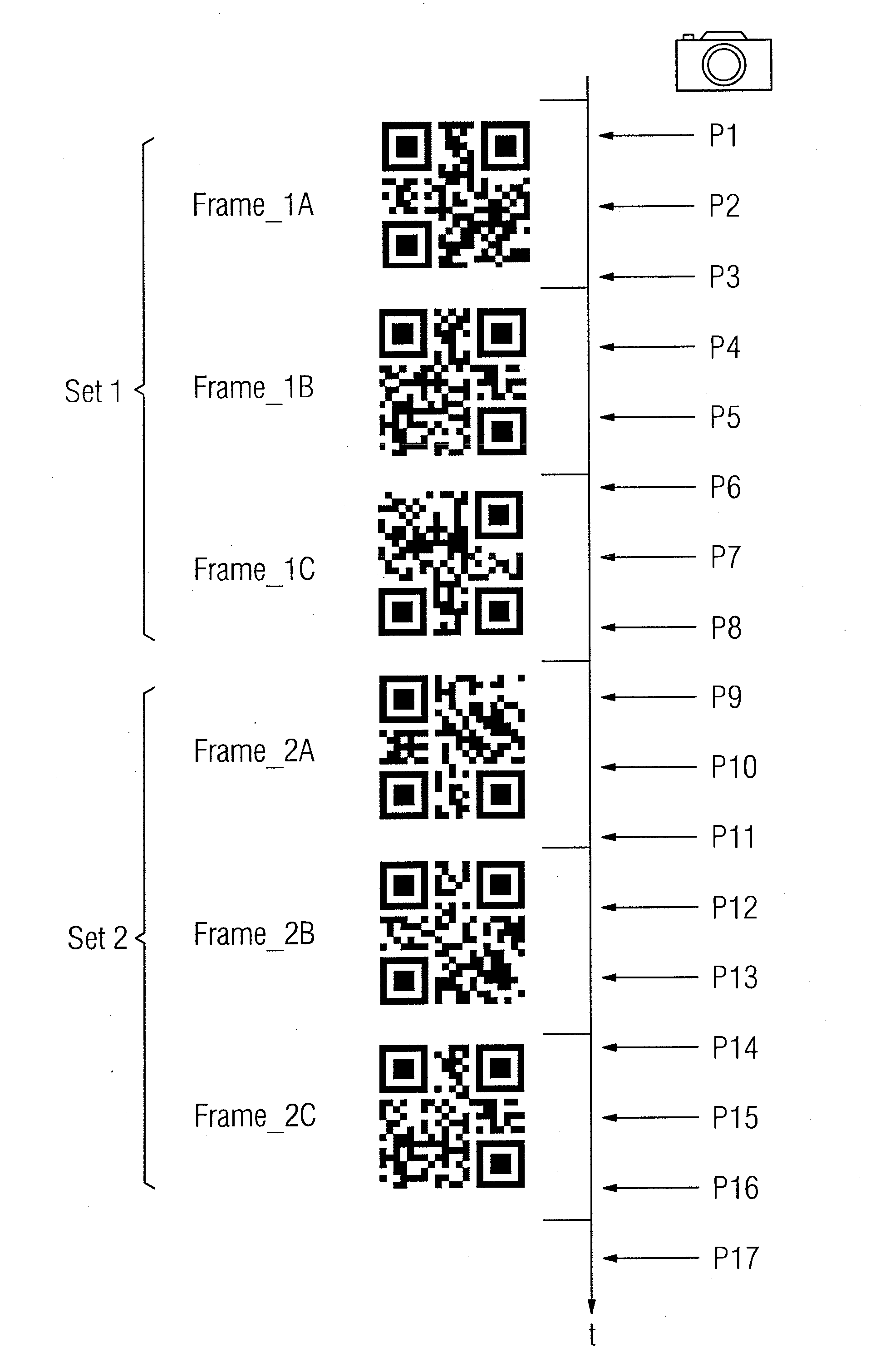Method and Reader for Capturing a Plurality of Two-Dimensional Codes which are Presented in Succession on a Display Apparatus
a two-dimensional code and display apparatus technology, applied in the field of method and reader for capturing a plurality of two-dimensional codes presented in succession on a display apparatus, can solve the problems of simple readers, prone to general limitation, and individual shots being erroneous and undecodable, so as to reduce the number of iteration steps required, reduce the computational complexity, and establish the orientation of the code very easily
- Summary
- Abstract
- Description
- Claims
- Application Information
AI Technical Summary
Benefits of technology
Problems solved by technology
Method used
Image
Examples
Embodiment Construction
[0023]In this context, the single FIGURE shows a sequence of two-dimensional codes (frames), with the capture times of shots from a camera being presented simultaneously.
[0024]The figure shows, along a time axis t, a series of six two-dimensional codes Frame_1A, . . . , Frame_2C which are presented in succession, these codes Frame_1A, . . . , Frame_2C being presented on a display apparatus (not shown) in temporal succession for a respective stipulated period of time. In this case, the codes are used for transmitting a data stream, with the exemplary codes shown here containing their descriptor “Frame_1A” . . . “Frame_2C” as useful content. In a real arrangement, however, it would therefore also be possible to transmit individual images, data records, etc. The codes are organized in two sets Set1, Set2, which is an optional embodiment that is explained later. On the right-hand side of the figure, horizontal arrows are used to mark those times on the time line t at which a shooting ap...
PUM
 Login to View More
Login to View More Abstract
Description
Claims
Application Information
 Login to View More
Login to View More - R&D
- Intellectual Property
- Life Sciences
- Materials
- Tech Scout
- Unparalleled Data Quality
- Higher Quality Content
- 60% Fewer Hallucinations
Browse by: Latest US Patents, China's latest patents, Technical Efficacy Thesaurus, Application Domain, Technology Topic, Popular Technical Reports.
© 2025 PatSnap. All rights reserved.Legal|Privacy policy|Modern Slavery Act Transparency Statement|Sitemap|About US| Contact US: help@patsnap.com


